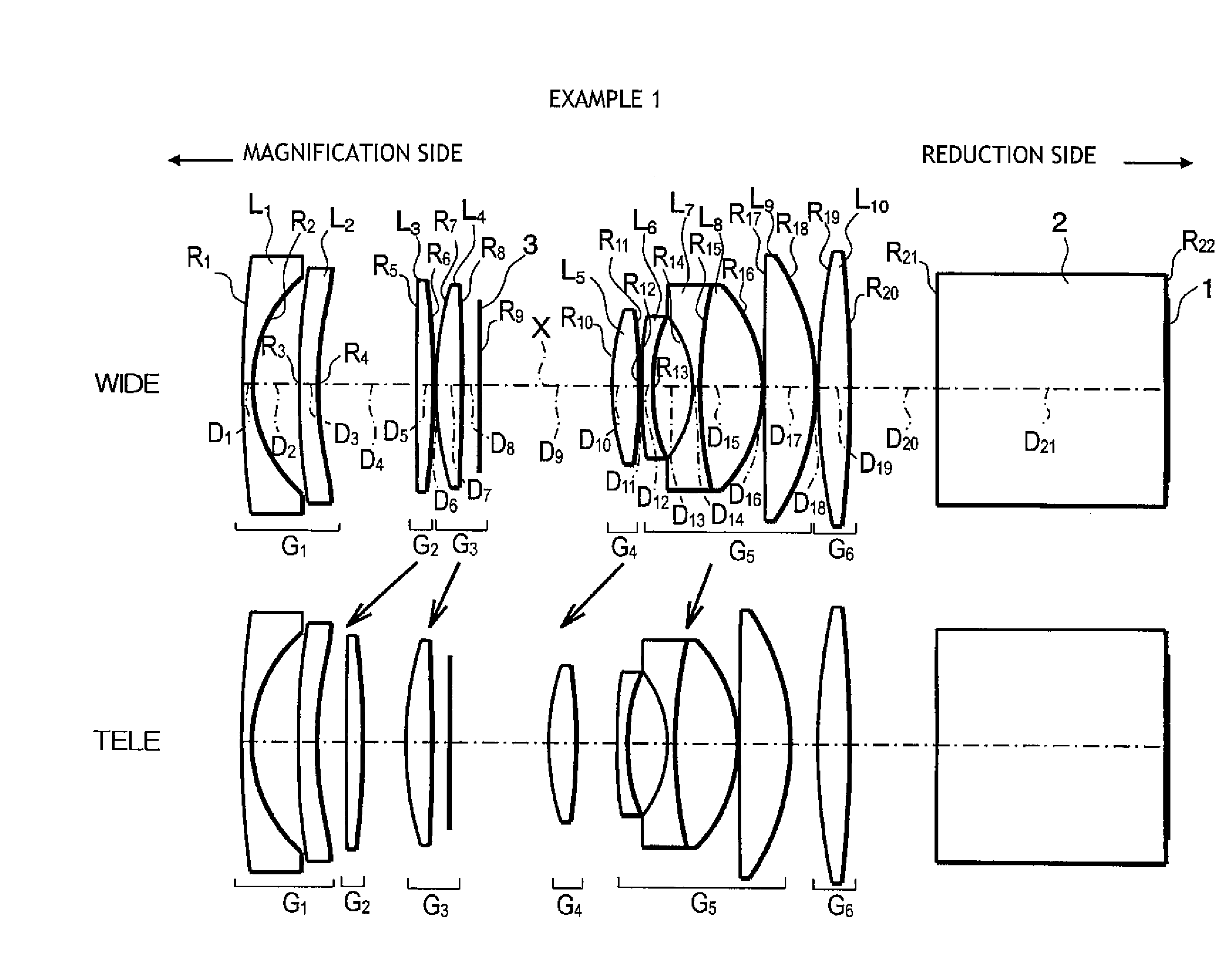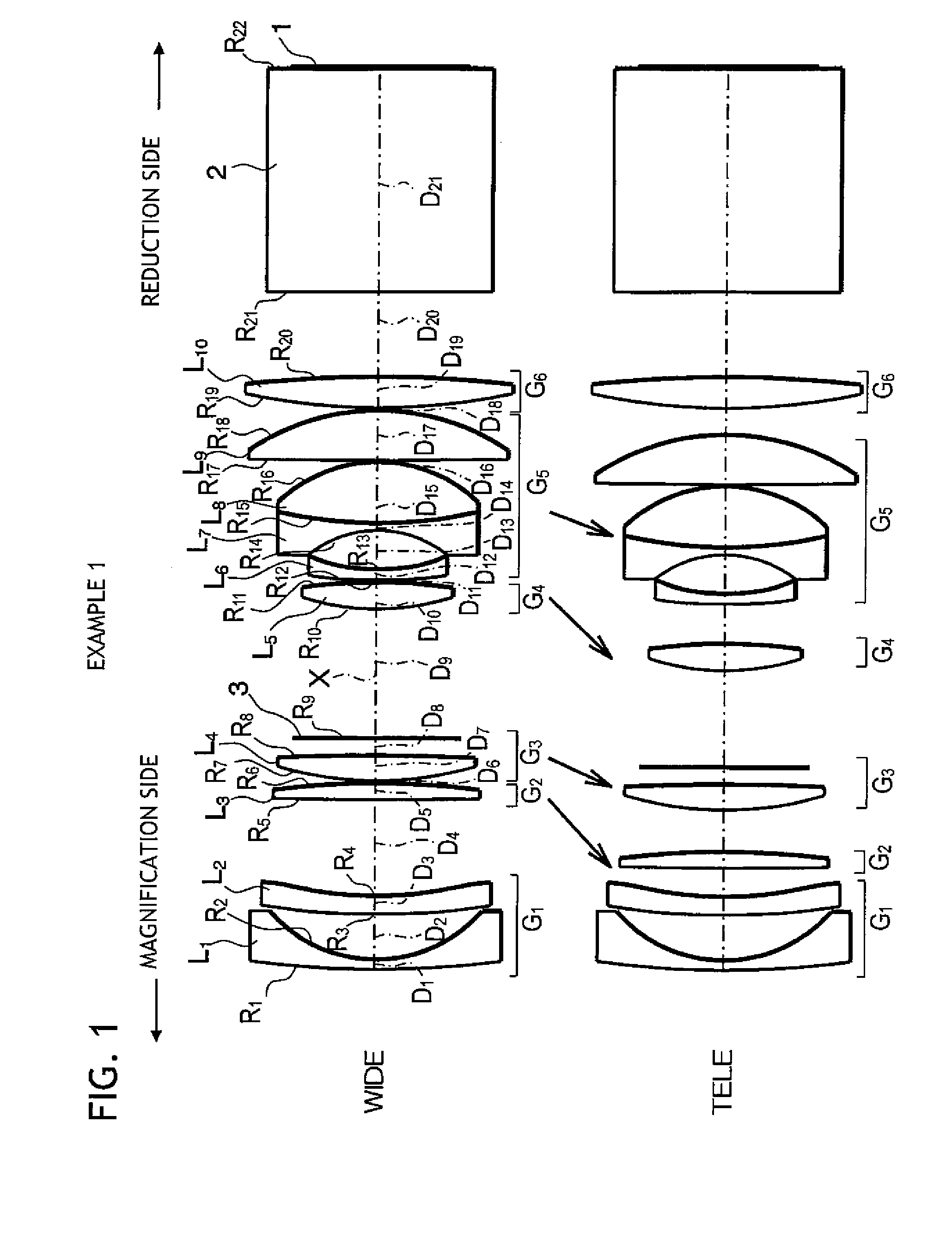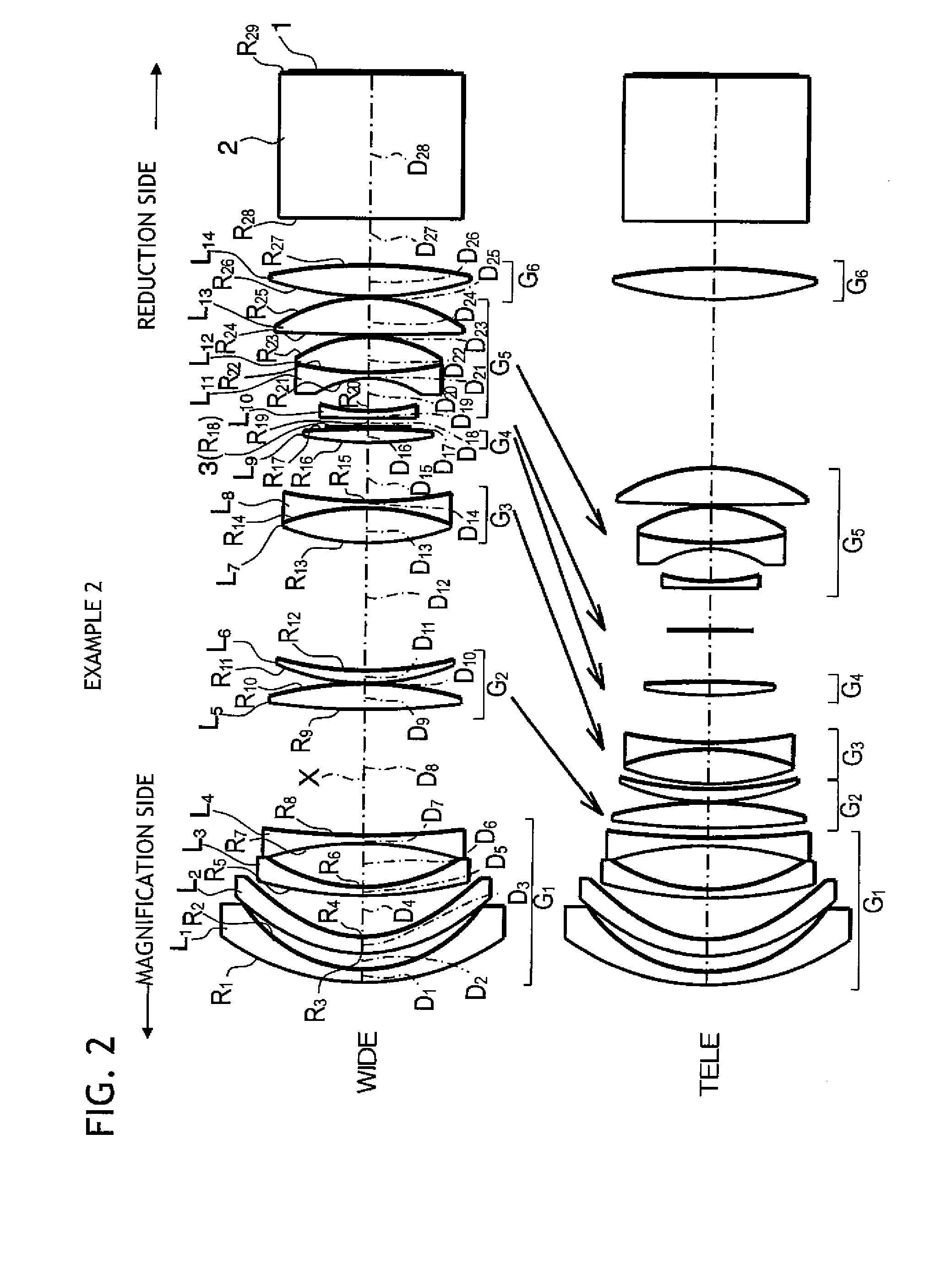Projecting zoom lens and projection display device
a projecting zoom and display device technology, applied in the field of projecting zoom lenses, can solve the problems of curvature of an image surface, increase in cost, and increase in lens size, and achieve the effects of wide angle of view, large zoom ratio, and long back focus
- Summary
- Abstract
- Description
- Claims
- Application Information
AI Technical Summary
Benefits of technology
Problems solved by technology
Method used
Image
Examples
example 1
[0098]As described above, the projecting zoom lens according to Example 1 was constructed as shown in FIG. 1. That is, in this projecting zoom lens, the first lens group G1 included a first lens L1 formed of a negative meniscus lens having a convex surface directed to the magnification side, and a second lens L2 formed of a negative meniscus lens having a convex surface directed to the magnification side. Also, the second lens group G2 included a third lens L3 formed of a biconvex lens. The third lens group G3 included a fourth lens L4 formed of a biconvex lens. The fourth lens group G4 included a fifth lens L5 formed of a biconvex lens. Also, the fifth lens group G5 included a sixth lens L6 formed of a plano-concave lens having a flat surface, near the optical axis, directed to the magnification side, a cemented lens constructed by a seventh lens L7 formed of a biconcave lens and an eighth lens L8 formed of a biconvex lens, and a ninth lens L9 formed of a biconvex lens. Also, the s...
example 2
[0106]A schematic configuration of a projecting zoom lens according to Example 2 is shown in FIG. 2. The projecting zoom lens according to Example 2 was constructed substantially similarly to that in Example 1. In description for corresponding drawings, the like reference symbols are affixed to the like elements and thus redundant explanations will be omitted herein.
[0107]Example 2 is different from Example 1 mainly in lens configurations of the first lens group G1, the second lens group G2, and the third lens group G3 and in that the mask 3 is provided on the reduction side of the fourth lens group G4 and is moved independently of the respective lens groups.
[0108]In the configurations of the first lens group G1, the second lens group G2, and the third lens group G3 of the projecting zoom lens according to Example 2, the first lens group G1 included a first lens L1 formed of a negative meniscus lens having a convex surface directed to the magnification side, a second lens L2 formed ...
example 3
[0116]A schematic configuration of a projecting zoom lens according to Example 3 is shown in FIG. 3. The projecting zoom lens according to Example 3 was constructed substantially similarly to that in Example 1. In explanation of the corresponding drawings, the like reference symbols are affixed to the like elements and thus redundant explanations will be omitted herein.
[0117]Example 3 is different from Example 1 mainly in lens configurations of the first lens group G1, the third lens group G3, and the fifth lens group G5 are different and that the mask 3 is provided on the reduction side of the fourth lens L4 and is contained in the second lens group G2.
[0118]In the configurations of the first lens group G1, the third lens group G3, and the fifth lens group G5 of the projecting zoom lens according to Example 3, the first lens group G1 included a first lens L1 formed of a negative meniscus lens having a convex surface directed to the magnification side, a second lens L2 formed of a b...
PUM
 Login to View More
Login to View More Abstract
Description
Claims
Application Information
 Login to View More
Login to View More - R&D
- Intellectual Property
- Life Sciences
- Materials
- Tech Scout
- Unparalleled Data Quality
- Higher Quality Content
- 60% Fewer Hallucinations
Browse by: Latest US Patents, China's latest patents, Technical Efficacy Thesaurus, Application Domain, Technology Topic, Popular Technical Reports.
© 2025 PatSnap. All rights reserved.Legal|Privacy policy|Modern Slavery Act Transparency Statement|Sitemap|About US| Contact US: help@patsnap.com



